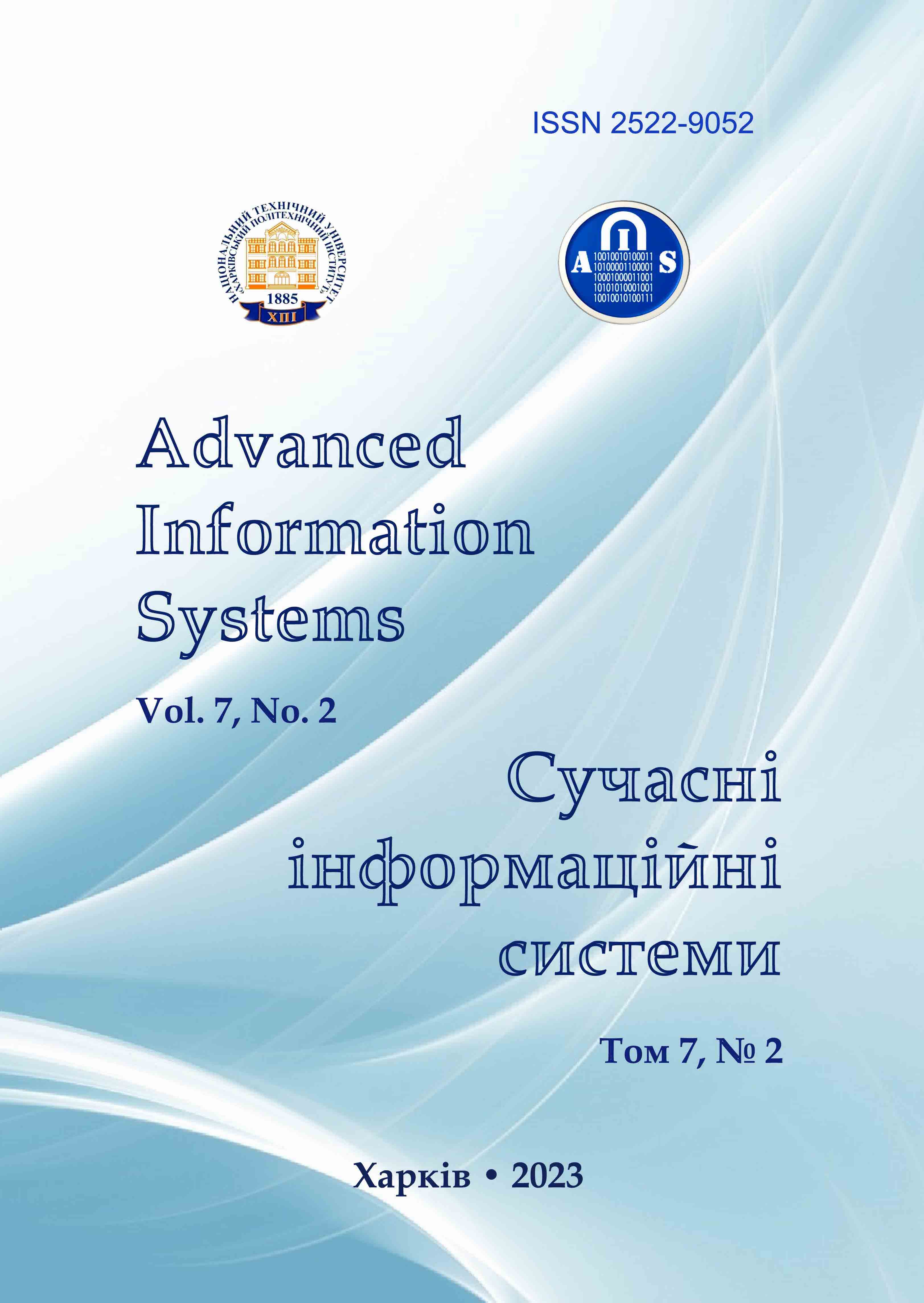MULTI-CRITERIA EVALUATION OF THE MULTIFACTOR STOCHASTIC SYSTEMS EFFECTIVENESS
Main Article Content
Abstract
Subject of the research in the article is the evaluation of complex multifactor stochastic systems functioning effectiveness according to a variety of correlated criteria. The problem actuality is determined by the fact that an independent evaluation of system effectiveness for each of the mutually correlated criteria for the system under consideration is not informative. In well-known works in the direction of multiple correlation, a relatively simple problem of estimating the correlation between one resulting parameter and a set of influencing factors is considered, which is not enough for the analysis and management of multicriteria systems. In addition, the known results do not take into account possible significant differences in influencing factors mutual correlation values. Purpose of Work is to develop a methodology for a comprehensive assessment of system effectiveness according to a variety of interrelated criteria. Tasks to be Solved: splitting the set of system parameters into two subsets (parameters determining the effectiveness of system and parameters affecting it), forming additive convolutions of parameters included in subsets, developing a methodology for calculating the multiple correlation coefficient between the components of the selected subsets, developing a method for differentiating a scalar function from a vector argument by this argument. Applied Methods: nonlinear programming, multidimensional correlation analysis, method of differentiation of scalar functions by vector argument. These methods are used for forming and calculating a multiple correlation coefficient between the set of system effectiveness complex criterion components values and its control parameters set values. Results Obtained: proposed methodology provides the possibility of solving the problems of system management, taking into account the revealed relationship between the multi-criteria evaluation of system effectiveness and values of its controlled parameters. At the same time, an important advantage of the obtained result lies in the possibility that arises when using it to take into account the joint (group) influence of control variables on the complex criterion of system efficiency. The developed technology of scalar functions differentiation by vector argument has great practical importance which expands the arsenal of computational mathematics.
Article Details
References
Cramér H. (1999), Mathematical Methods of Statistics, Princeton Mathematical Series, Vol. 9, 575 р., available at: https://archive.org/details/in.ernet.dli.2015.149716.
Gmurman V.E. (1977), Fundamentals of Probability Theory and Mathematical Statistics, First Thus Edition, 479 p., available at: https://www.amazon.com/Fundamentals-Probability-Theory-Mathematical-Statistics/dp/0592039315.
Raskin, L., Sira, O., & Ivanchykhin, Y. (2017), “Models and methods of regression analysis under conditions of fuzzy initial data”, Eastern-European Journal of Enterprise Technologies, Vol, 4(4 (88)), pp. 12–19, doi: https://doi.org/10.15587/1729-4061.2017.107536
Gill, F., Murray, W. and Wright, M. (1997), Practical optimization, Academic Press, San Diego, CA 92101, 402 p., available at: http://gaznevada.iq.usp.br/wp-content/uploads/livros/gill.pdf.
Kullback, S. and Leibler, R.A. (1951), “On information and Sufficiency”, Ann. Math. Statist, Vol. 22, No. 1, pp. 79–86, available at: https://www.jstor.org/stable/2236703
Hemdy, A. (2007), Operations Research, Williams, 912 p., available at: https://pdfgoes.com/download/2835726-Operations%20Research%20Hamdy%20Taha%20Solutions%20Manual.pdf.
Raskin, L.G. and Pustovoitov, P.E. (2002), “Solution of a multi-product inventory management problem by a probabilistic criterion”, Bulletin of NTU KhPI, Series “System Analysis, Management, Information Technologies”, No. 13, pp. 49-53.
Raskin, L., Sira, O. and Ivanchikhin, Y. (2017), “Modes and methods of regression analysis under conditions of fuzzy ininial data”, Eastern-European Journal of Enterprise Technologies, Vol. 1, No. 4 (75), pp. 12-19, doi: https://doi.org/10.15587/1729-4061.2017.127034.
Feller, W. (1970), An introduction to probability theory and applications, J. Wiley, 527 p., available at: https://bitcoinwords.github.io/assets/papers/an-introduction-to-probability-theory-and-its-applications.pdf.
Semenov, S., Sira, O., Gavrylenko, S. and Kuchuk, N. (2019), “Identification of the state of an object under conditions of fuzzy input data“, Eastern-European Journal of Enterprise Technologies, Vol 1, No 4 (97), pp. 22-30, doi: https://doi.org/10.15587/1729-4061.2019.157085.
Reilly, O. (2017), Practical Statistics for Data Seientist, O. Reilly Media Inc., 286 p., available at:
https://www.oreilly.com/library/view/practical-statistics-for/9781491952955.
Cramer, H. (1999), Mathematical methods of statistics, Princeton University Press, 575 р., Stockholm, 647 p., available at: https://books.google.com.ua/books/about/Mathematical_Methods_of_Statistics.html?id=CRTKKaJO0DYC&redir_esc=y.
